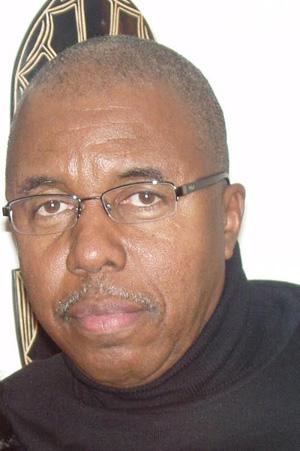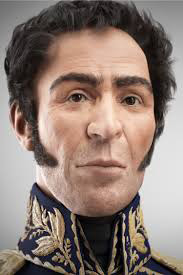VENEZUELA’s disdain for smaller nations populated by formerly enslaved and oppressed people can be traced back to its founding, and its founder, Simon Bolivar.
In 1816, Bolivar with his tail tucked between his legs after a humiliating defeat by Spanish forces, landed on the shores of Haiti. Haitian revolutionary leaders who a few years earlier had routed France’s slave-owning army and established an independent African state, gave him boats, arms and soldiers. That assistance enabled Bolivar to eventually defeat Spain, creating the country we now call Venezuela.
After defeating Spanish forces with the arms, material and men provided by Haiti, Simon Bolivar’s Venezuela refused to recognise Haiti, thus hastening that country’s capitulation to France’s 21.5 billion dollar extortion. It took Haiti over 150 years to pay France. The country never recovered!
Eduardo Galeano, the Uruguayan author of the seminal work, ‘The Open Veins of Latin America,’ said this about Bolivar’s perfidy in a 2004 article in the Progressive Magazine:
“Not even Simon Bolivar recognised Haiti, though he owed it everything… Haiti gave him everything with only one condition: that he free the slaves [in Venezuela] – an idea that had not occurred to him… The great man triumphed in his war of independence…Of recognition, he made no mention!”
THE BORDER CONTROVERSY
The provenance of Venezuela’s aggression against Guyana is its 1841 protest of Great Britain’s delineation of Guyana’s western boundary, eponymously known as the Schomburgk Line [named after Robert Schomburgk, a British surveyor and naturalist]. At the time Guyana was a colony of Great Britain.
Incapable of confronting the British militarily, Venezuela asked the United States to arbitrate the dispute. The U.S. government convened an American boundary commission in 1895 in which Venezuela participated “enthusiastically,” according to historical records. The British government participated under protest. Venezuela was enthusiastic because America was its ally; thus, it expected a favourable outcome.
On October 3, 1899, the American boundary commission rendered its decision: the Schomburgk Line will stand! Venezuela ratified the commission’s decision.
For 63 years following that decision, official Venezuelan maps showed the Essequibo region as belonging to Guyana, said Francisco Toro, writing in the June 12, 2015 edition of the Caracas Chronicles.
According to Toro: “If you know anything about international law, you probably know that accepting territory as belonging to someone else in official maps puts a serious dent on any attempt to convince people that, oh wait, that land is mine.”
VENEZUELAN AGGRESSION AGAINST GUYANA
Immediately after Guyana gained independence from Britain in 1966, Venezuela, taking advantage of Guyana’s small size and population, began plotting to seize the country’s Essequibo territory. In 1969, Venezuela-trained and equipped Guyanese secessionists declared an “Essequibo Free State.”
Guyana’s President David Granger, wrote about that insurrection in his 2012 book, ‘National Defence’ in which he stated: “Armed with rifles, machine-guns and anti-tank bazooka’ weapons, the rebels easily seized Lethem, the District centre and all outlying areas, killing several policemen and imprisoning “coastlander” government employees in the process.”
However, within 24 hours, the rebels were routed by soldiers of the Guyana Defence Force (GDF). All rebel property was destroyed and order was restored.
Where blatant military aggression failed, Venezuela tried bribery and resorted to economic sabotage. In 1978, during a state visit to Guyana then Venezuelan president Carlos Andres Perez, offered to finance the upper Mazaruni hydro-electric project if the Guyana government ceded 31,000 square kilometres of territory to his country. Guyana’s president, Forbes Burnham, rejected that proposal outright!
Venezuela subsequently opposed all efforts on the part of Guyana to obtain the financing needed to exploit its hydro-electric potential, frustrating the country’s industrialisation programme and thus stultifying its economic growth.
Fast forward to 2015 and the same strategy from Venezuela of military threats, bribery and “co-option” of Guyanese citizens still prevails. Over the past several years, the Venezuelan government purchased rice from Guyana at obscenely exorbitant prices – paying almost twice the world market price. Political observers saw this as a gimmick on the part of Venezuela to build a constituency of Guyanese rice farmers and their beneficiaries to pressure the previous administration in Guyana to accede to Venezuela’s territorial demands, similar to the strategy employed in 1969 when Venezuela organised Rupununi ranchers to secede from Guyana.
However, with the election of the David Granger administration on May 11, 2015, observers believe that the new government comprises individuals who are more patriotic and committed to the preservation of Guyana’s territorial integrity. Soon after the May elections, Venezuela stopped purchasing rice from Guyana, hoping, experts believe, to trigger unrest in the rice-producing areas to destabilise the country.
Additionally, with the announcement by ExxonMobil of the discovery of oil in Guyana’s territorial waters, Venezuela has once again invoked, what Francisco Toro describes as, a “childish fantasy” that is a “threat to world peace.”
Last May, Venezuelan president Nicolas Maduro, reacting to the oil discovery in Guyana’s waters, issued a decree claiming that area as Venezuela’s. Maduro is fighting for his political life and experts believe that his braggadocio – ranting in his country’s parliament that Venezuela’s sun “rises” in Essequibo – is simply political prestidigitation; a clumsy attempt to distract his people’s and the world’s attention from the fact that his country’s economy is imploding and that Venezuelans are killing each other over food, because of chronic food shortages in the country.
THE WAY FORWARD
A well-placed source at the Washington D.C.-based Organisation of American States (OAS) urged Venezuela to respect international law in its dispute with Guyana. The source, who requested anonymity because of the sensitivity of the matter, noted that President Maduro’s decree “affects Guyana as well as Barbados, Trinidad and Tobago and Columbia,” raising tensions and contributing to the destabilisation of the Region.
While President David Granger sees Venezuela’s decades-old aggression as “a fishbone in our throats,” choking his country’s economic life, he, nevertheless, is committed to a diplomatic solution. In that regard, his government has reached out to several regional and sub-regional bodies, including the United Nations, the African Union, CARICOM, and the Commonwealth to build global opposition to Venezuelan pettifoggery and aggression.
“We are a small nation of less than one million people. Venezuela has a population of over 25 million. A military confrontation between our two nations will not be in Guyana’s best interests,” President Granger observed.
Legal experts believe that a settlement must be imposed by the International Court of Justice (ICJ). However, the Maduro administration, bolstered by support from what is described by Dr. Gerald Horne of the University of Houston as a “feisty and combative” racist elite in Caracas, is reluctant to take this matter before an impartial panel of judges of the ICJ, fearing an 1899 result – 116 years after his country ratified the American boundary commission’s ruling which established the western border of Guyana.
by Ifa Kamau Cush
(Ifa Kamau Cush, BA, MA is an international correspondent for New African Magazine. Mr. Cush was a Ph.D. candidate at NYU University)



